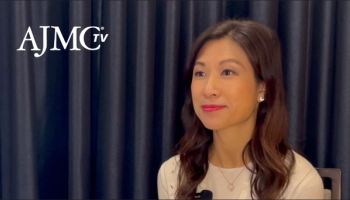
Improving Outreach to Underserved Areas With Telepsychiatry
During a workshop, panelists discussed outreach efforts, including Project Extension for Community Healthcare Outcomes, known as Project ECHO, to deliver psychiatric care to underserved patients in the United States and Canada.
This page contains sponsored advertising.
When patients with mental illness live in rural or underserved areas, there are challenges to getting them access to the care they need. During a workshop at the American Psychiatric Association’s 2018 Annual Meeting, panelists discussed outreach efforts, including Project Extension for Community Healthcare Outcomes (ECHO), to deliver psychiatric care to underserved patients in the United States and Canada.
The panel included 3 members involved in a mental health Project ECHO program in Ontario—Allison Crawford, MD, co-chair of ECHO Ontario Mental Health and a psychiatrist and assistant professor at the University of Toronto; Sanjeev Sockalingam, MD, associate professor at the University of Toronto; and Eva Serhal, MBA, manager of telepsychiatry at the ECHO Ontario Mental Health—and 1 American perspective from Donald Hilty, MD, associate professor at the University of California Davis School of Medicine.
Crawford provided the Canadian context that 1 in 5 Canadians are affected by a mental health disorder or addiction, which is elevated among marginalized or disadvantaged groups that often live in rural areas.
In the Ontario region, there are 3 ways patients can get access to psychiatric care:
- Fly-in/drive-in, which is the traditional model where patients have to physically travel long distances to get care
- Telepsychiatry, through which patients are connected to providers at a different location or community
- Project ECHO, where providers connect with one another to provide expertise
These services need to be implemented in meaningful ways to create relationships among providers and between providers and communities, but also to ensure that services aren’t duplicated, she said. In addition, when implementing services like Project ECHO and telepsychiatry, providers need to ensure that there is equity among communities in need. Crawford’s group found disparities in that some communities got everything, while other high-needs communities got nothing.
Hilty explained that in the United States, mental health is still unserved or underserved compared with other conditions and that the country is still moving from an acute care model to a patient-centered one.
The traditional models for a patient to receive psychiatric care that he highlighted were:
- Traditional referral, where a primary care physician (PCP) refers the patient to a psychiatrist, who then provides the care
- Consultation-liaison model, where the PCP refers, the psychiatrist does an evaluation, and the PCP provides the care. The idea is to move skills and knowledge to the PCP.
- Collaborative care model, where the PCP and the psychiatrist provide care together and better integrate services. This isn’t something everyone can do, though, he said, in which case the consultation-liaison model can be used to improve the PCP’s skill sets over time.
Project ECHO uses a hub and spoke educational model to use video conferencing to bring expertise from a specialist to primary care. The “hub” is a team of specialists and the “spokes” are the primary care physicians who are learning from the hub. But that learning does go both ways, Sockalingam explained. Often the hubs are learning from the spokes about community resources or interventions that aren’t available in academic centers.
“It’s not the traditional unidirectional dissemination of knowledge,” he said.
The model is a 2-hour clinic every week where the spokes dial in to consult with the hub. There is a brief didactic about best practices, and a discussion about anonymized cases happening in the real-world. Then, there are a series of recommendations for the spokes to implement.
A survey of the ECHO Ontario Mental Health, which included 53 spoke sites—the farthest of which was 900 miles away from the hub—found that 60% of spokes implemented the recommendations, 19% intended to implement the recommendations, 16% did not implement the recommendations, and the remaining respondents provided incomplete information.
In addition, Sockalingam’s ECHO hub gave formal knowledge pre- and posttests to the group with the questions randomized so people didn’t receive the same questions both times. The results found an improvement in the mental health care knowledge of the spoke sites.
“ECHO is another program for capacity building for gaps in mental health care,” said Sockalingam.
There are barriers to implementing ECHO, though. Crawford explained that money will always be an issue, but so are the administrative aspects, such as someone needing to set up time and space in the office for the spokes to video conference in. Serhal added that culture and behavioral change are also a large barrier, because the program means teaching people how to provide care in a different way.
As part of the program, ECHO Ontario Mental Health did studies to look at how to expand the program and a systems-level analysis. One of those studies analyzed implementation and utilization, which found that few psychiatrists had been delivering care through telepsychiatry, and even then, it was predominantly through urban academic centers. In addition, only 3800 people received telepsychiatry, typically as a 1-time appointment, but there are nearly 14 million people living in the Ontario area.
The analysis also found there was no clearly defined systematic rational for the organization of telepsychiatry delivery. Among the trends they found perplexing was a trading of telepsychiatry with 1 region delivering telepsychiatry to another and also receiving telepsychiatry from that same region. While they are still investigating the reason, one thing they did find was that telepsychiatry in Ontario was largely based off of relationships.
“Is that the best model for delivering telepsychiatry?” Serhal wondered.
Finally, Crawford finished the session with some next steps, including the need to continue reaching out to areas with low human resources, a better integration of services, as well as more evidence. She explained that there is a need for more measurement of outcomes.
“[We are] interested in taking that to the next level and looking at not just access, but the quality of health improvement,” Crawford said. “So, we’re not as far along in that as we were hoping.”
Newsletter
Stay ahead of policy, cost, and value—subscribe to AJMC for expert insights at the intersection of clinical care and health economics.
















































